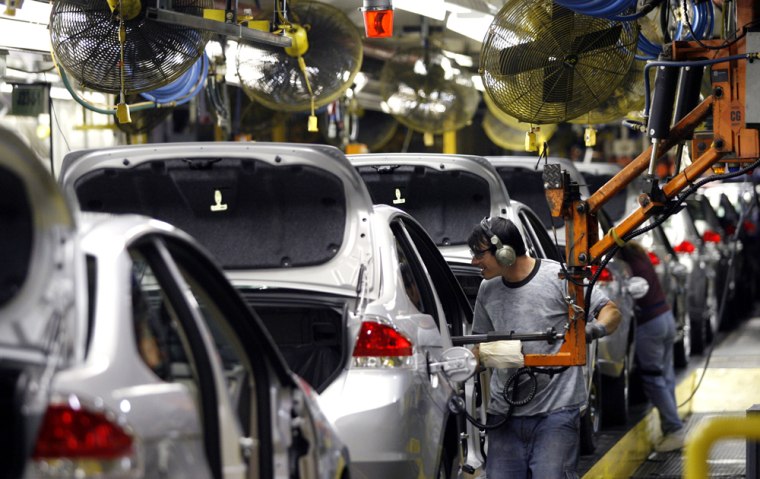If the wildly successful Cash for Clunkers program proved anything, it's that with the right kind of financial incentive Americans will buy small, fuel-efficient cars. Armed with rebates of up to $4,500 from the federal government, consumers snapped up cars such as the Honda Civic and Ford Focus. They did pretty much the same thing last summer when gasoline prices in the U.S. roared past four bucks a gallon.
And what happens when high gas prices or government handouts go away? Americans buy what they want. And it's usually not compact cars but powerful family sedans and sport-utility vehicles. That presents a problem for automakers. Over the next 18 months, the industry is bringing to market nine all-new small cars and subcompacts. Now the clunker program is over, and gasoline, currently hovering at $2.62 a gallon nationally, is expected to stay below $3 for the foreseeable future. So carmakers, even traditionally strong ones like Honda and Toyota, could be forced to dangle discounts before buyers. That, of course, would hammer per-car profits, especially for the Detroit Three.
Why are so many small cars appearing when gas prices are low? Because automakers must plan new vehicles three to four years ahead, plus fuel economy rules all but require more of them. When fuel prices began marching upward in 2005, everyone from General Motors and Ford to Mazda and Kia started designing and engineering small models. The first fruits of those efforts are now showing up on dealer lots. Kia is just launching its Forte compact and the small, boxy Soul. Mazda has a new 3 compact on the market. GM and Ford each have three new small cars coming by the end of 2010. By 2013, all those new models will add 600,000 cars worth of production to a market niche that has traditionally sold about 2.5 million, according to IHS Global Insight.
It is hard to make decent money on small cars unless you have a long history of making and selling them, as do the Japanese. U.S. automakers do not, and it was instructive to watch the profit roller coaster when high gas prices created a miniboom in these vehicles last summer. In May 2008 gas prices hit a national average of $3.76, and small-car sales surged a remarkable six percentage points, to 17 percent of the overall U.S. market. Suddenly, GM had decent economies of scale: Cars that once lost as much as $3,000 apiece were closer to break-even despite discounts of up to $900 each.
But the gas-price shock had worn off by August (though oil prices didn't begin their historic retreat for another few months), and small-car sales slumped. By then, GM had ramped up production and soon small cars were piling up at dealers. Carmakers turned up the discounts, and GM later had to take off the third shift at its Ohio small-car plant. Consider this, too: While the clunker program clearly drove buyers into showrooms, carmakers spent about $1,900 per compact to help spur sales, according to Edmunds.com, which tracks new-car prices.
Carmakers badly want to believe that Americans like small cars. Eric Noble, president of the CarLab, a consulting firm in Orange, Calif., says several European and Asian carmakers have hired him to do consumer research on small-car demand. When consumers gave them the thumbs-down, the clients asked him to rewrite the questions to see if that would change the result. It didn't. Noble believes the success of the Mini Cooper has led other carmakers to believe Americans like small cars. Among other things, he says, "they think small cars are unsafe."
Americans also see them as cars for people who can't afford a better ride. So the carmakers are loading up their small models with creature comforts and technology in the hopes of winning customers and charging them a premium. Ford's new Focus compact and Fiesta subcompact will feature the Sync infotainment system, which allows drivers to load music onto an in-dash hard drive, and hands-free calling and navigation. Ford says the new SYNC-equipped Focus fetches $2,000 more than the old one. Kia has added satellite radio and hands-free Bluetooth phone technology. GM's Buick compact will feature leather seats, electronic gadgetry, and a Lexus-smooth ride.
If carmakers don't find enough buyers who want spruced-up compacts, the U.S. auto companies will be duking it out on price with their better positioned rivals. Then, these minicars could lead to megalosses.
